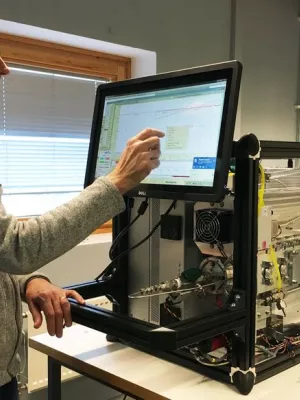
Erik Swietlicki
Professor

Anthropogenic aerosol effects on convective cloud microphysical properties in southern Sweden
Author
Summary, in English
In this study, we look for anthropogenic aerosol effects in southern Scandinavia's clouds under the influence of moderate levels of pollution and relatively weak dynamic forcing. This was done by comparing surface aerosol measurements with convective cloud microphysical profiles produced from satellite image analyses. The results show that the clouds associated with the anthropogenic-affected air with high PM0.5, had to acquire a vertical development of similar to 3.5 km before forming precipitation-sized particles, compared to less than 1 km for the clouds associated with low PM0.5 air-masses. Additionally, a comparison of profiles with precipitation was done with regard to different potentially important parameters. For precipitating clouds the variability of the cloud thickness needed to produce the precipitation (Delta h(14)) is directly related to PM0.5 concentrations, even without considering atmospheric stability, the specific aerosol size distribution or the aerosols' chemical composition. Each additional 1 mu g m(-3) of PM0.5 was found to increase Delta h(14) by similar to 200-250 m. Our conclusion is that it is indeed possible to detect the effects of anthropogenic aerosol on the convective clouds in southern Scandinavia despite modest aerosol masses. It also emphasizes the importance of including aerosol processes in climate-radiation models and in numerical weather prediction models.
Department/s
- Nuclear physics
Publishing year
2008
Language
English
Pages
286-297
Publication/Series
Tellus. Series B: Chemical and Physical Meteorology
Volume
60
Issue
2
Links
Document type
Journal article
Publisher
Taylor & Francis
Topic
- Subatomic Physics
Status
Published
ISBN/ISSN/Other
- ISSN: 0280-6509